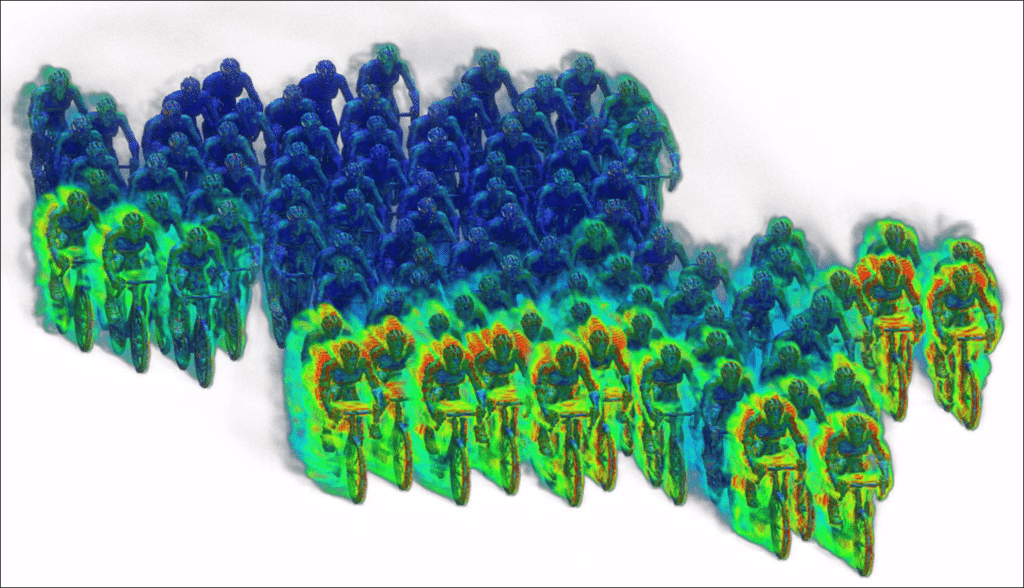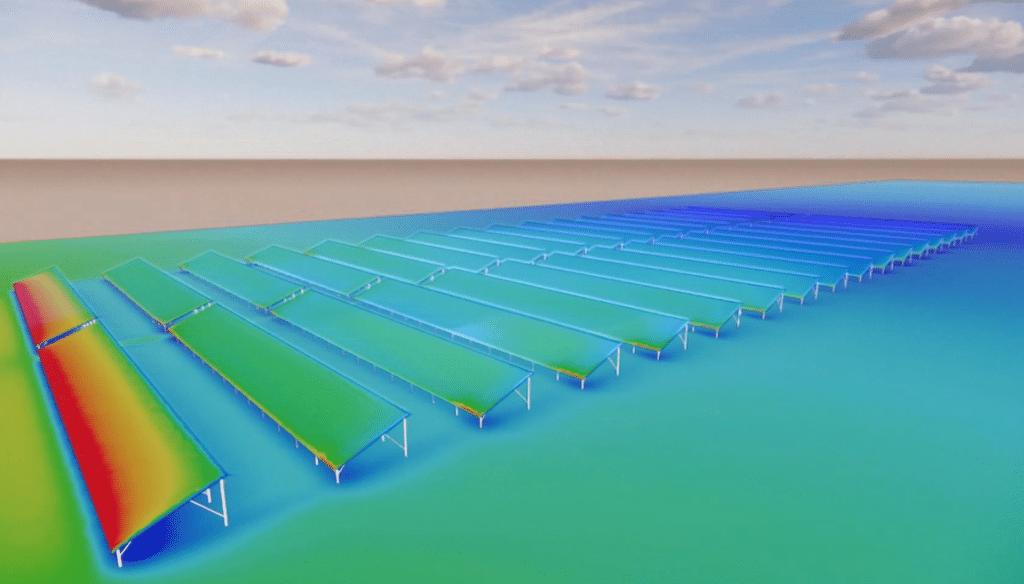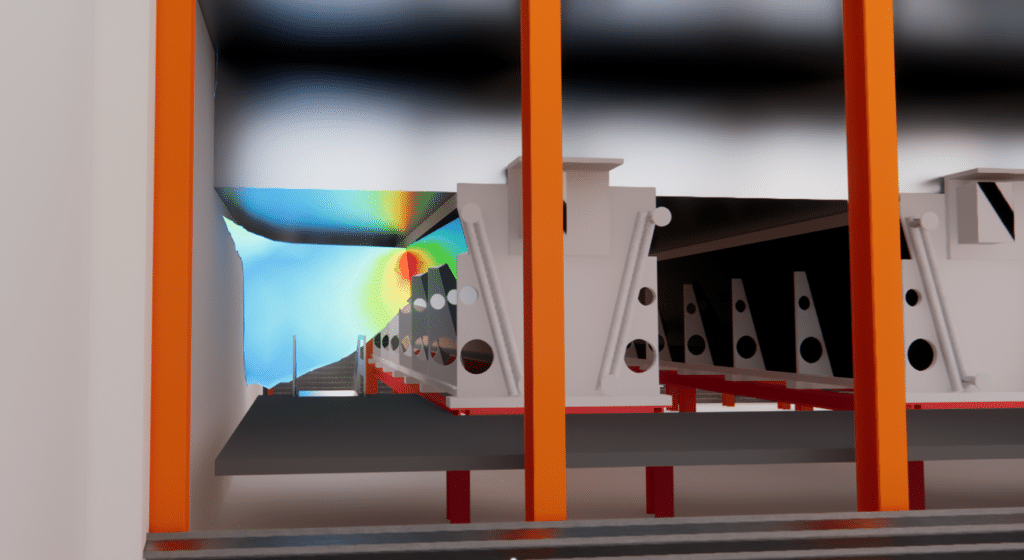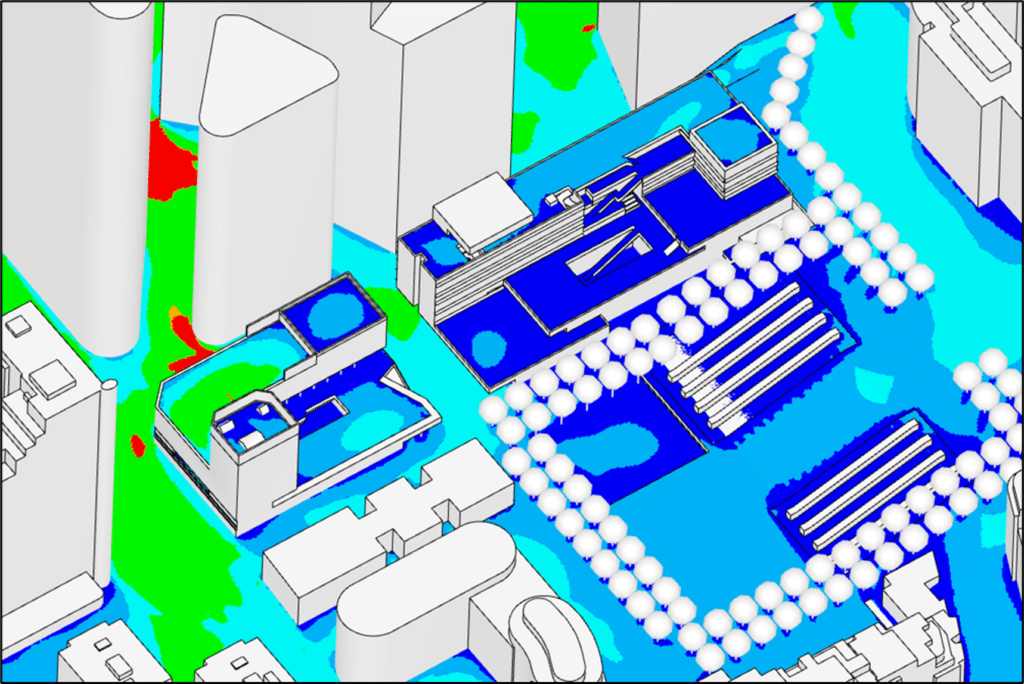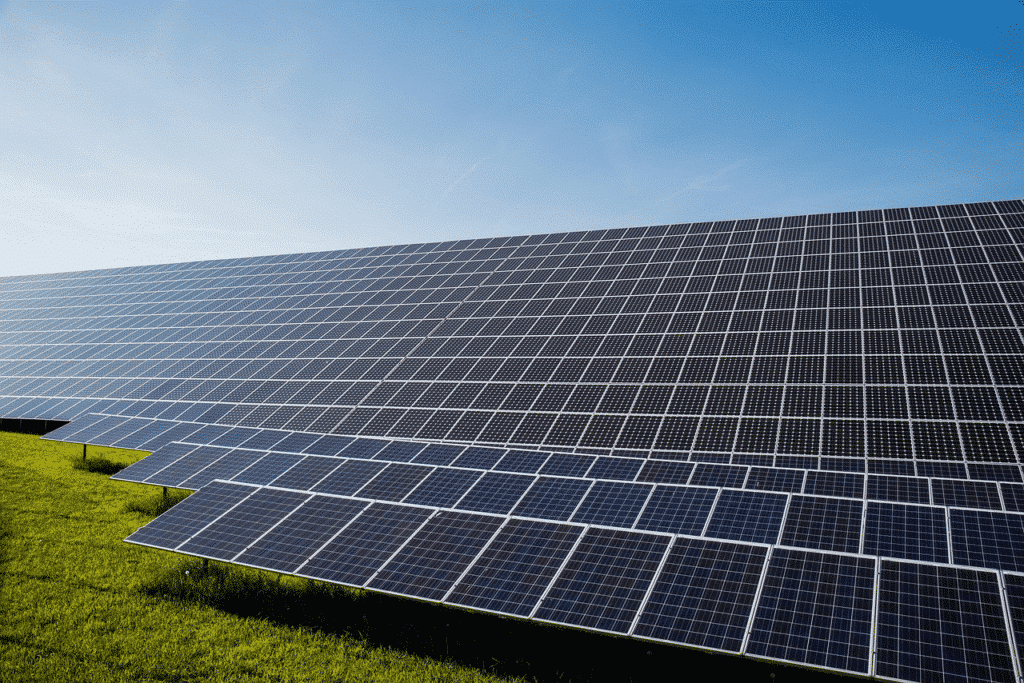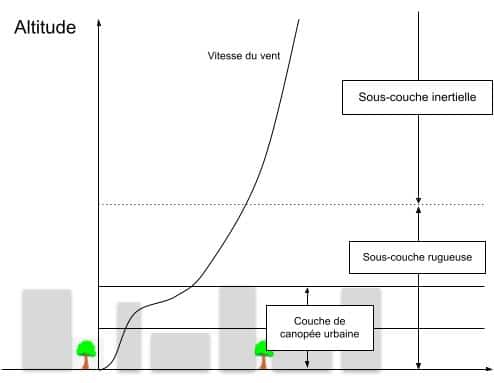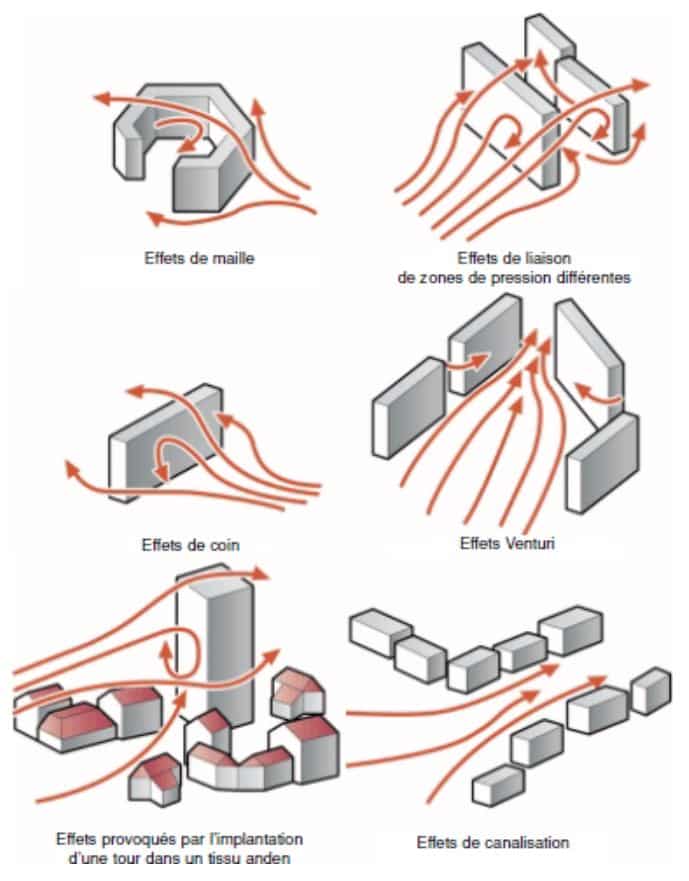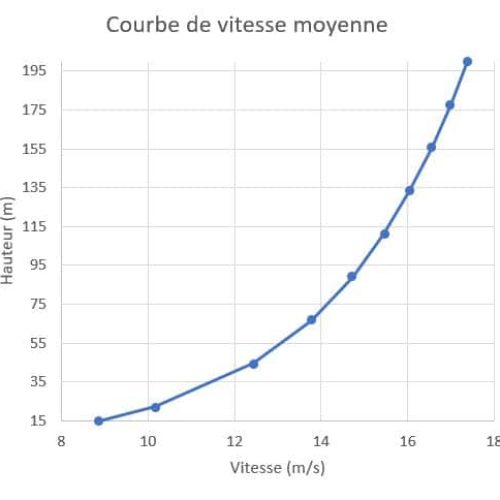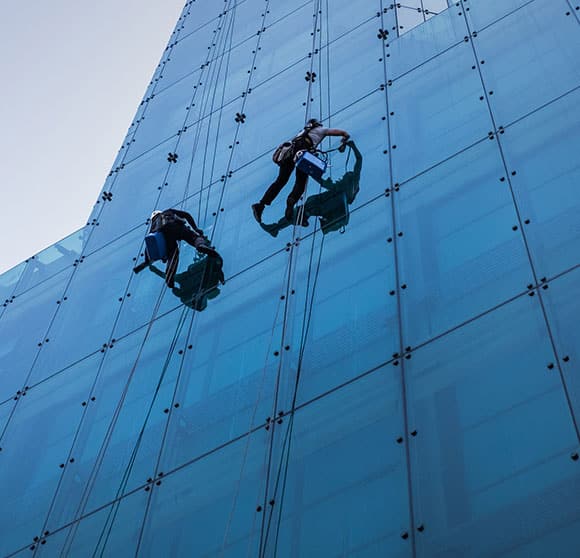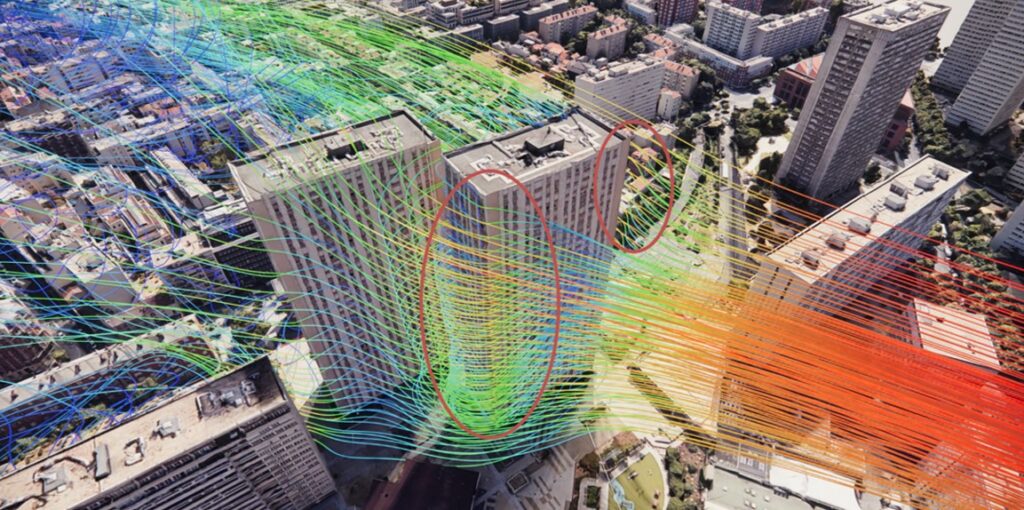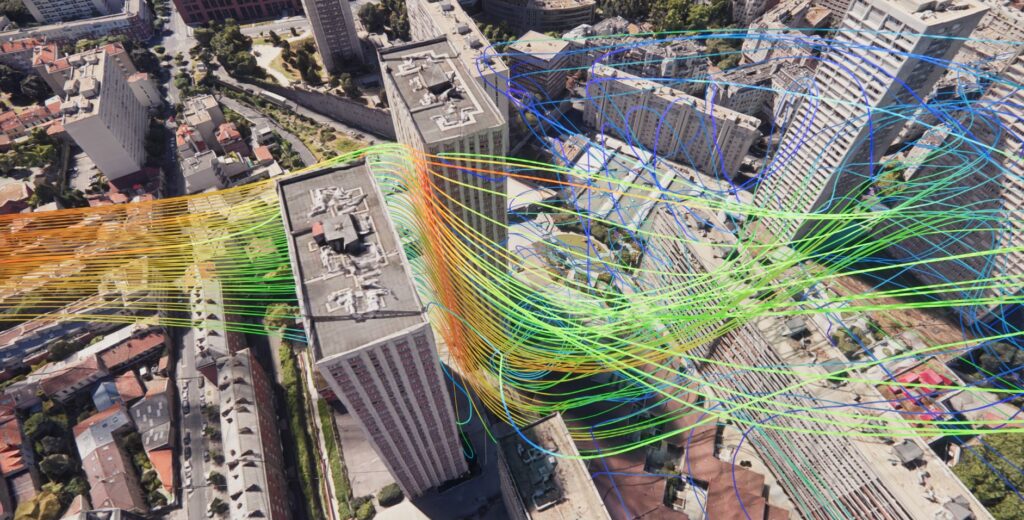Home » Air & Wind » Simulation of wind pressure on buildings – Eurocode 1 » Wind impacts on high-rise buildings: Tours Olympiades in Paris
Wind impacts on high-rise buildings: Tours Olympiades in Paris
Wind impacts on high-rise buildings: Tours Olympiades in Paris
Year
2025
Customer
EIFFAGE
Location
France
Typology
Air & Wind
Continue navigation :
Our other projects :
Latest news :
Technical file :
Our expertise:
Wind impacts on high-rise buildings: CFD study on the Olympiades Towers in Paris
As part of a renovation project, EOLIOS was asked to analyze the impact of wind on two high-rise buildings classified as IGH (high-rise buildings) (high-rise buildings) located in the Olympiades district, in the 13ᵉ arrondissement of Paris. The study takes place in a dense urban context, with both structural and operational issues linked to the buildings’ great height.
The main objective of the mission was to characterize site effects through a numerical aerodynamic study. CFD simulation was used to assess the distribution of wind speeds and pressures around the buildings for eight wind directions.
The analysis focused on several critical points:
– Identification of recirculation, overspeed or protection zones induced by the configuration of the towers and adjacent buildings;
– Assessment of the impact of site effects on the use of maintenance gondolas, in particular as a function of the gust speeds reached at different altitudes;
– Measurement of pressures exerted on facades, both using CFD and Eurocode calculation methods, to verify design assumptions.
Wind characterization in urban environments
Atmospheric boundary layer structure
Wind analysis in built-up areas relies on a good understanding of the vertical structure of the atmosphere and the effects of topography and urbanization. In CFD simulation, this modeling enables us to faithfully reproduce velocity profiles and wind-building interaction phenomena.
The wind observed at ground level is strongly influenced by the characteristics of the atmospheric boundary layer, which consists of three sub-layers:
– The rough sub-layer, close to the ground, where obstacles create disorganized turbulence.
– The surface layer, between 10 and 100 m high, where a marked gradient of velocity and temperature is established.
– The outer layer, or inertial sublayer, is higher and less disturbed, reflecting the geostrophic wind.
In this stratification, wind speed varies according to a logarithmic profile with altitude, a phenomenon known as vertical shear.
Influence of ground roughness on wind profiles
The roughness of the ground or urban fabric strongly modifies wind profiles. A dense environment (tightly packed buildings, vegetation) slows down the wind at ground level, accentuating the vertical gradient. Conversely, an open terrain (plain, sea) allows the wind to develop more freely. These effects are incorporated into CFD modeling via a roughness coefficient, derived from the characteristics of the terrain in accordance withEurocode recommendations.
Aerodynamic effects in dense urban areas
Local acceleration phenomena
The presence of tall buildings and a complex urban fabric generates numerous wind disturbances. These effects need to be identified to ensure the safety and comfort of users, particularly when working at height.
Certain architectural configurations cause localized wind acceleration:
– Venturi effect: compression and acceleration of the flow between two nearby buildings.
– Channelling effect: concentration of wind in streets oriented along the prevailing wind axis.
– Corner effect: the appearance of turbulence and gusts at the sharp corners of buildings.
These phenomena can generate high wind speeds, a source of discomfort or risk.
Impact of high-rise buildings on urban aeraulics
High-rise buildings (IGH ) induce marked downwash effects: the flow hitting the upper facade is redirected towards the ground, increasing speeds at the foot of the building. This configuration is often problematic around entrances, terraces or pedestrian zones. With CFD, these effects can be quantified to anticipate overflows and design appropriate protection measures. In the image opposite, corner effects are clearly visible.
Site effect on wind around a high-rise building
Façade pressures and structural effects
Pressure distribution - Vigilance zones
High-rise buildings are subject to significant aerodynamic loads. These pressures must be precisely assessed to ensure the robustness of the envelope.
Wind exerts dynamic pressures on exposed walls and depressions on opposite faces. These forces are concentrated in particular :
– At vertical edges, areas of stagnation and flow detachment;
– On surfaces exposed to the prevailing wind, where load amplitudes are greatest.
The shape of the tower, its orientation, and the roughness of the site are decisive parameters in load distribution.
Influence of façade pressure distribution on design
Facade elements (curtain walls, glazing, fixings) must be designed to withstand localized pressures without excessive deformation. CFD modeling can be used to pinpoint the areas of greatest stress, and to test the effect of design variants prior to execution.
Integration of the Eurocode standard through CFD simulation
CFD model input parameters
To ensure the validity of the simulations and alignment with regulatory practices in the study presented below, CFD modeling takes into account the requirements of EN 1991-1-4 (Eurocode Wind), as well as the results of an extensive meteorological study.
The simulations use :
– Basic wind speed () determined according to site location and topography.
– Roughness coefficients () and orography coefficients (
), adapted to the terrain category studied. These coefficients take into account the structure of the soil or surrounding environment, in particular its influence on the vertical profile of wind speed, and the effects of topography (relief) on wind flows.
– A logarithmic vertical velocity profile(Vm(z)), defined on the basis of these parameters and adjusted according to site-specific conditions.
This framework makes it possible to simulate representative wind speeds at different altitudes and compare them with established safety thresholds.
Use of a specific CFD model for multidirectional analysis
The average standard wind speed profile at the domain entrance is calculated as follows:
The specific model used can simulate different wind directions (e.g. 8 main orientations). Starting from a reference profile, site effects are analyzed for each orientation, highlighting local accelerations, recirculation zones or deflection effects.
The velocity profile at the domain entrance, corresponding to a uniform base velocity and the roughness parameters associated with a specific terrain, is calculated in accordance with theEurocode using the following formula:
Safe working at height - CFD supports safety
Safety standards for aerial work platforms
CFD simulation can be used to anticipate wind-related risks, in addition to safety recommendations, when working with gondolas on facades.
According to standard NF EN 280, nacelles must not be used above 12.5 m/s. In a complex urban context, site effects can locally amplify this speed, hence the need for a detailed assessment through simulation.
Benefits of CFD analysis - Assessing compliance with standards
Thanks to CFD, overspeed zones that could impact nacelle stability are identified. Areas of shelter or low turbulence are also located to define safe intervention ranges. The results obtained are cross-referenced with weather data to formulate recommendations for use in the field.
Using CFD to analyze high-rise buildings
Architectural configuration of Olympiades towers
The study site comprises two residential towers in the Olympiades district, located in a dense urban environment. One of the towers, Tour Tokyo, has a rectangular geometry with 29 storeys, a flat facade and sloping balconies. The second, the Osaka Tower, is 35 storeys high, with a facade alternating solid and glazed sections, as well as spindly balconies.
The two buildings are located parallel to each other and have a similar orientation. Their height and positioning create a complex aeraulic context, conducive to marked site effects such as wind channelling, local accelerations and vortices, all the more so as the environment is strongly constrained by the density of the surrounding buildings.
Multi-directional CFD analysis
Several scenarios were analyzed to reflect the variability of wind direction:
- North wind
- Northeast wind
- East wind
- South-easterly wind
- South wind
- Southwest wind
- Westerly wind
- Northwest wind
These simulations enabled us to observe airflow dynamics and assess the speed and direction of airflow around the two towers.
CFD study of site effects, wind gusts and pressure on high-rise buildings - Tours Olympiades
Site effects highlighted by CFD simulation
The study clearly identified site effects linked to the location of buildings in their urban environment. By modeling the eight main directions of the wind rose, the numerical simulation highlighted specific phenomena depending on wind direction:
– For a northerly wind, the tower to the south benefits from a recirculation zone generated by the north tower, resulting in a significant attenuation of wind speeds on its façade.
– Conversely, in a south-westerly wind, the north tower is in turn protected by the south tower.
– For easterly and southeasterly winds, a marked Venturi effect is observed between the two towers, with a significant acceleration of wind speeds in the gap.
In all configurations, exposed edges generate vortices that induce locally high speeds, but also create zones of relative calm on the walls themselves. These effects are crucial in anticipating the safe use of façade access devices.
80m speed plans for the 8 study directions
Increased speed at building edges
Venturi effect for a westerly wind
CFD evaluation of gust speeds and their impact on the use of overhead nacelles
Using CFD results, average wind speeds were converted into gust speeds at different altitudes, based on standard formulas incorporatingturbulent intensity and dynamic pressure. This made it possible to calculate a velocity amplification coefficient due to site effects for each wind direction.
For example, for a north-westerly wind :
– At 20 m: +26% amplification,
– At 50 m: +48%,
– At 80 m: +77%.
By cross-referencing these data with meteorological data, we were able to estimate the length of time that the nacelles would be unavailable due to local speeds exceeding the standard limit of 12.5 m/s. This is approximately 250 hours per year.
These data are essential for planning renovation operations and guaranteeing the safety of work at height.
Wind pressure on facades: CFD validation for Eurocode dimensioning
The simulations also enabled us to determine the pressures exerted on facades according to different wind orientations. The most constraining orientation was identified for an easterly wind, with maximum pressures reached on the west facade and on the roof of a tower.
The most stressed zones are the upper edges of directly exposed faces. These data were then compared with the values derived from the Eurocode analytical approach, with a good level of agreement.
This consistency between numerical and analytical methods validates the relevance of CFD simulation as a complementary sizing tool, particularly for small fasteners exposed to the most severe loads.
Wall pressure - East wind
EOLIOS supports you - Anticipate wind constraints for all your projects
The CFD study carried out on the Olympiades Towers highlighted significant site effects, linked to the dense urban configuration and the interaction of winds with the surrounding built volumes. Thanks to numerical simulation, it was possible to precisely map overspeed, recirculation and protection zones as a function of wind direction, and to derive relevant results for wind design.
In particular, the results enabled us to identify the most critical heights and wind directions for the use of maintenance gondolas, by cross-referencing local gust speeds with meteorological data. This approach enabled us to accurately estimate the number of hours per year during which wind conditions exceeded safety thresholds, providing valuable insight for planning maintenance operations at height.
This study illustrates the importance of aeraulic modelling in the design or rehabilitation phase, providing a precise understanding of the interactions between wind and the built environment. The result is safer interventions,optimized technical choices and greater resilience of high-rise buildings to climatic stresses.
Wind impact study at La Défense
Are you working on a high-rise building project or on a dense site? Call on our CFD expertise to secure your choices and optimize your interventions right from the design phase.
Continue on this topic
Video summary of the study
Summary of the study
As part of a renovation project, EOLIOS carried out a CFD study on the Olympiades Towers (IGH) in Paris to analyze the effects of wind in a dense urban environment. The simulation identified overspeed, recirculation and protection zones according to eight wind directions. The aim was to assess the impact on the safety of maintenance gondolas, pressures on facades and compliance with Eurocode standards.
The results revealed Venturi effects between towers, local gust amplifications, and critical areas for intervention at height. The study also made it possible to map static pressures on facades, identify areas subject to high loads, and identify areas of low pressure that could influence the behavior of openings. This analysis enabled us to anticipate risks, optimize the sizing of façade elements and adapt technical solutions to the local aerodynamic context.
Video summary of the mission
Discover other projects
Study of aeraulic comfort – Middle school
Wind comfort study – Rooftop
Wind impacts on high-rise buildings: Tours Olympiades in Paris
Comfort – Rooftop of a palace – Casablanca
Tour Liberté – La Défense
Impact of wind on a solar power plant
Cooling towers – ICPE
Pedestrian comfort study – La Défense
Confort au Vent – PSG training center
Wind study – La Défense
Fine particle capture in a metro station
Sharaan by Jean Nouvel resort
Air coolers – Critical study – Heat wave
Fine dust measurements
Balenciaga – Wind potential

